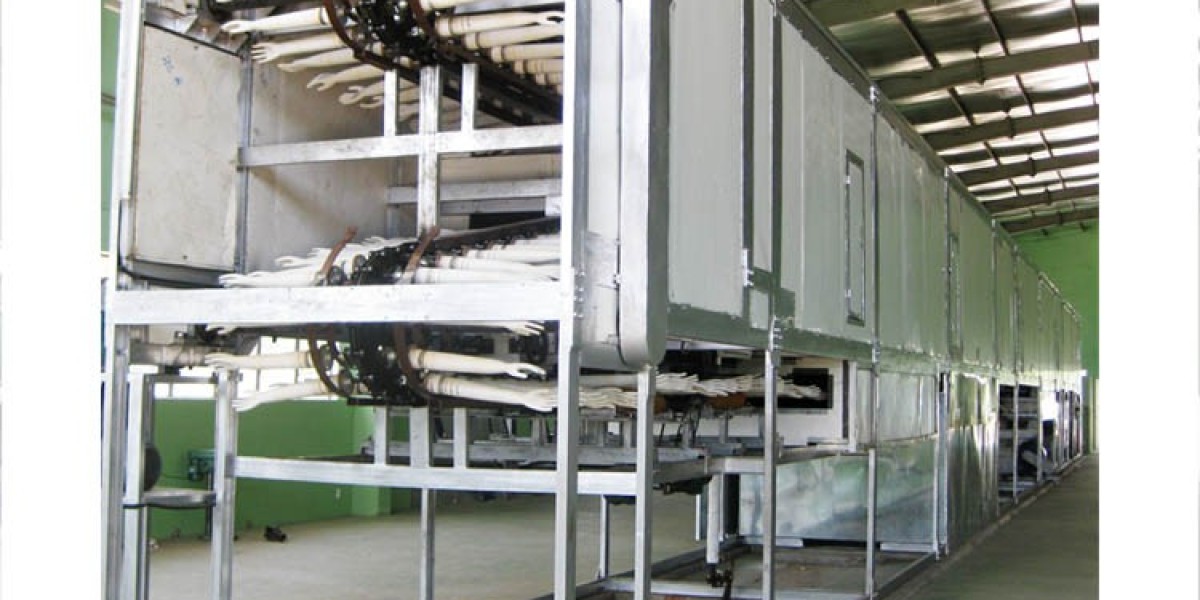Glove Dipping Machine: The Backbone of Modern Protective Glove Manufacturing
In today's healthcare, industrial, and cleanroom environments, disposable gloves have become an essential component of safety protocols. Behind the production of billions of gloves annually stands a crucial piece of equipment: the glove dipping machine. This sophisticated manufacturing system has revolutionized how protective gloves are produced, enabling mass production while maintaining consistent quality standards.
Understanding the Glove Dipping Machine
A glove dipping machine is an automated production line designed to manufacture disposable gloves through a dipping process. The system uses ceramic or aluminum hand-shaped formers that are repeatedly dipped into liquid polymer solutions—typically latex, nitrile, or vinyl—to create thin, flexible glove films. This continuous process allows manufacturers to produce thousands of gloves per hour with remarkable consistency.
The Dipping Process Explained
The operation of a glove dipping machine follows a carefully orchestrated sequence. First, clean formers are treated with a coagulant solution that helps the polymer adhere properly. These formers then enter a heated chamber for drying before being submerged into tanks containing the primary polymer compound. After withdrawal, the coated formers pass through leaching baths to remove excess chemicals and proteins, followed by multiple drying ovens that cure the material at precisely controlled temperatures.
Modern glove dipping machines often incorporate multiple dipping stations, allowing for the creation of thicker gloves or the application of different material layers. This versatility enables manufacturers to produce various glove types ranging from ultra-thin examination gloves to heavy-duty industrial protection.
Types and Configurations
Glove dipping machines come in several configurations to meet different production needs. Straight-line systems feature formers mounted on continuous chains that travel in a linear path through various stations. Rotary or carousel designs arrange the dipping stations in a circular pattern, optimizing floor space utilization. The most advanced facilities employ fully automated systems with robotic handling and real-time quality monitoring.
Production capacity varies significantly based on machine size and configuration. Small-scale operations might utilize machines producing 5,000 to 10,000 gloves per hour, while large industrial glove dipping machines can achieve outputs exceeding 40,000 gloves hourly per production line.
Material Versatility
One significant advantage of modern glove dipping machines is their ability to work with multiple polymer types. Latex remains popular for its elasticity and comfort, though nitrile has gained market share due to superior chemical resistance and allergen-free properties. Vinyl offers a cost-effective alternative for low-risk applications. Manufacturers can reconfigure their glove dipping machine systems to accommodate different materials, providing flexibility to respond to market demands.
Quality Control Integration
Contemporary glove dipping machines incorporate sophisticated quality control mechanisms throughout the production process. Automated thickness measurement systems use sensors to verify consistent polymer deposition. Pinhole detection equipment employs electrical conductivity testing to identify defective gloves before packaging. Temperature and humidity sensors ensure optimal curing conditions, while computer systems log production data for traceability and process optimization.
Environmental Considerations
As environmental consciousness grows, glove dipping machine technology has evolved to address sustainability concerns. Modern systems feature improved chemical recovery systems that recycle polymer solutions and reduce waste. Energy-efficient heating elements and heat recovery systems lower power consumption. Some manufacturers have developed water-based formulations that eliminate or reduce volatile organic compound emissions during the dipping process.
Economic Impact
The efficiency of glove dipping machines has made disposable gloves affordable and accessible worldwide. This accessibility has profound implications for public health, enabling proper infection control practices in medical settings and protecting workers across numerous industries. The COVID-19 pandemic dramatically illustrated the critical importance of scalable glove production capacity, with glove dipping machine facilities operating around the clock to meet unprecedented global demand.
Future Developments
Innovation in glove dipping machine technology continues to advance. Manufacturers are exploring antimicrobial coatings, improved grip textures, and enhanced tactile sensitivity. Automation and artificial intelligence are being integrated to predict maintenance needs, optimize production parameters, and further improve quality consistency. Some facilities are experimenting with hybrid materials that combine the best properties of different polymers.
Conclusion
The glove dipping machine represents a perfect synthesis of chemical engineering, mechanical design, and process automation. These systems have transformed protective glove manufacturing from a labor-intensive craft into a highly efficient industrial process. As global demand for disposable gloves continues to grow across healthcare, food service, industrial, and consumer applications, the glove dipping machine will remain central to meeting safety needs while advancing production efficiency and sustainability. For manufacturers entering this market or expanding capacity, investing in modern glove dipping technology is essential for maintaining competitiveness in an increasingly quality-conscious and regulated industry.








